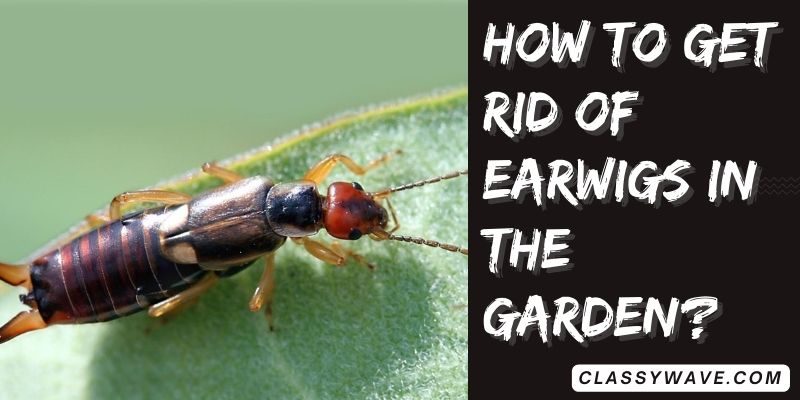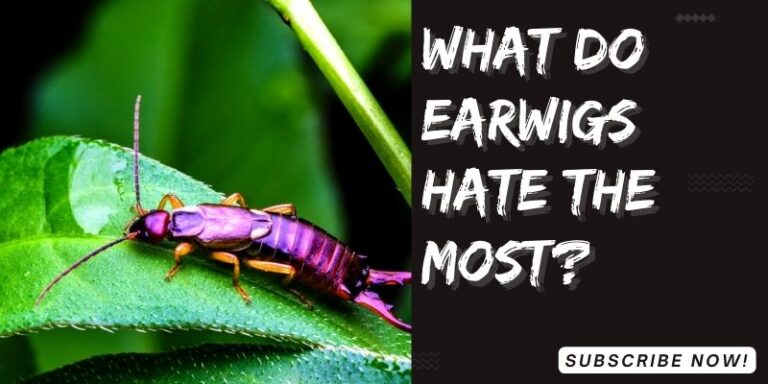how to get rid of earwigs in the garden? Effective Ways
Banishing earwigs from your garden involves a multifaceted approach. From natural remedies to cultural practices, this guide explores effective methods to eliminate earwigs without resorting to harmful chemicals. Discover strategies tailored to create a balanced, thriving garden ecosystem while addressing and preventing earwig infestations.
Natural Ways to Control Earwigs in Your Garden
Discover eco-friendly approaches like neem oil sprays, diatomaceous earth, and introducing natural predators to keep earwigs in check. Embrace sustainable gardening practices that minimize the need for chemical interventions, fostering a balanced ecosystem.
Creating an Unfavorable Environment for Earwigs
Learn how to modify your garden’s conditions to discourage earwig infestations. From reducing moisture levels to eliminating hiding spots, create an environment that makes it less hospitable for these pests, promoting a healthier garden ecosystem.
Organic Pest Control Methods for Earwigs
Explore organic solutions such as garlic and vegetable oil sprays, essential oils, and other natural repellents to deter earwigs without harming beneficial insects. Emphasize sustainable, non-toxic alternatives to traditional chemical pesticides.
Using Beneficial Insects to Combat Earwig Infestations
Introduce beneficial insects like parasitic wasps and ground beetles that prey on earwigs, contributing to biological control in your garden. Cultivate a diverse insect population to maintain a natural balance, reducing the need for chemical interventions.
Homemade Earwig Traps and Baits for the Garden
Craft simple yet effective DIY traps using common household items like oil-filled cans or rolled newspapers. Explore bait options that attract and trap earwigs, providing an economical and environmentally friendly solution for gardeners.
Implementing Cultural Practices to Manage Earwigs
Adopt cultural practices such as regular weeding, proper irrigation, and maintaining garden hygiene to discourage earwig infestations. Create an environment that disrupts their breeding and feeding habits, promoting a healthier garden ecosystem.
Choosing Earwig-Resistant Plants for Your Garden
Identify plants that are less attractive to earwigs and incorporate them into your garden design. Selecting species that naturally repel or resist earwigs can help reduce the likelihood of infestations and contribute to a more resilient garden.
Proper Garden Hygiene to Prevent Earwig Infestations
Emphasize the importance of cleanliness in the garden to eliminate earwig hiding spots and breeding areas. Regularly remove debris, decaying plant matter, and other potential shelters to create an environment less conducive to earwig populations.
Commercial Products for Earwig Control
Evaluate the advantages and drawbacks of commercial earwig control products, such as insecticides and traps. Understand the potential impact on the environment and non-target species, helping you make informed decisions about using chemical solutions.
Seeking Professional Help for Severe Earwig Infestations
Recognize when a professional pest control service may be necessary for severe earwig infestations. Explore the options available, considering integrated pest management strategies to address the issue effectively while minimizing environmental impact.
Understanding the Life Cycle of Earwigs in Gardens
Gain insights into the fascinating life cycle of earwigs, from egg to adulthood. Understanding their developmental stages equips you to implement targeted control strategies at key points, disrupting their reproductive cycle and preventing population surges in your garden.
Identifying Early Signs of Earwig Infestations
Learn to recognize the initial indicators of earwig presence, such as damage to plants and telltale feeding patterns. Early detection allows for prompt intervention, minimizing the impact of infestations and preserving the health of your garden.
The Role of Mulch in Earwig Control Strategies
Explore the connection between mulch and earwig habitat preferences. Discover how adjusting mulching practices can create an inhospitable environment for earwigs, offering a proactive and sustainable approach to pest management in your garden.
Seasonal Considerations for Managing Earwig Populations
Tailor your earwig control efforts to the seasons, understanding how these pests behave in different weather conditions. Seasonal awareness enables the implementation of timely interventions, optimizing the effectiveness of your pest management strategies throughout the year.
Utilizing Companion Planting to Deter Earwigs
Harness the power of companion planting to naturally repel earwigs. Explore plant combinations that deter these pests, creating a symbiotic garden environment where certain plants act as protectors, reducing the risk of earwig infestations and promoting overall garden health.
Conclusion
In conclusion, armed with a diverse array of strategies, you can successfully navigate the challenges posed by earwigs in your garden. Whether through natural deterrents, understanding their life cycle, or employing companion planting, a holistic approach can ensure a thriving garden ecosystem. By integrating these insights, you empower yourself to create a harmonious balance, mitigating earwig-related issues while fostering the overall health and vitality of your garden.
FAQs
Question: Are earwigs harmful to plants?
Answer: Yes, earwigs can damage plants by feeding on leaves and flowers, posing a threat to garden vegetation.
Question: What attracts earwigs to gardens?
Answer: Earwigs are attracted to damp conditions, decaying plant matter, and shelter, making well-mulched areas prime habitats.
Question: Do earwigs bite humans?
Answer: Yes, earwigs may pinch if threatened, but they rarely bite humans. Their pincers are more for defense.
Question: Can earwigs be beneficial in the garden?
Answer: Despite being pests, earwigs also consume aphids and other small insects, offering some natural pest control.
Question: How do I get rid of earwigs without using chemicals?
Answer: Use natural repellents like diatomaceous earth, neem oil, and traps to control earwigs without resorting to chemical pesticides.







